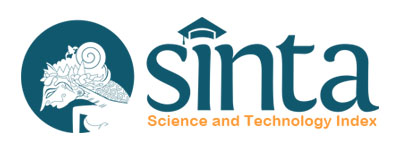Microsatellite Marker for Cross-Species Amplification: Study Case for Indonesian Sundaland Python (Serpentes: Pythonidae)
DOI:
https://doi.org/10.21776/ub.jels.2018.008.01.10Abstract
The python of Indonesian Sundaland has been traded for its distinct skin colour and patterns. The need for rapid method in cross-species amplification for Indonesian Sundaland python is useful to contribute in management of sustainability harvesting system. In this research, we screened 10 microsatellite primers which are previously used for Australian, New Guinean, Chinese and Burmese pythons and 7 potentially amplifiable primers for African and Asian reptiles. Python breitensteini showed a greater number of alleles (2-8 alleles) than Python bivittatus (1-3 alleles) and Python brongersmai (1-2 alleles). The observed and expected heterozygosity for all species were ranged from 0 to 1.00 and 0 to 0.79, respectively. According to the high cross-species amplification rates, 15 out of 17 primers were useful in assessing the genetic diversity and conservation genetic of Indonesian Sundaland python. Among the 15 primers, MS3 generated the highest number of allele for P. breitensteini (8 alleles), P. bivittatus (3 alleles), and P. brongersmai (2 alleles). We proposed MS3 locus as a suitable marker for Indonesian Sundaland python.
Keywords: microsatellite, Python, Sundaland.
Downloads
Published
Issue
Section
License
Copyright (c) 2018 The Journal of Experimental Life Science

This work is licensed under a Creative Commons Attribution 4.0 International License.
Authors who publish with this journal agree to the following terms:- Authors retain copyright and grant the journal right of first publication with the work simultaneously licensed under a Creative Commons Attribution License that allows others to share the work with an acknowledgement of the work's authorship and initial publication in this journal.
- Authors are able to enter into separate, additional contractual arrangements for the non-exclusive distribution of the journal's published version of the work (e.g., post it to an institutional repository or publish it in a book), with an acknowledgement of its initial publication in this journal.
- Authors are permitted and encouraged to post their work online (e.g., in institutional repositories or on their website) prior to and during the submission process, as it can lead to productive exchanges, as well as earlier and greater citation of published work (See The Effect of Open Access).
















